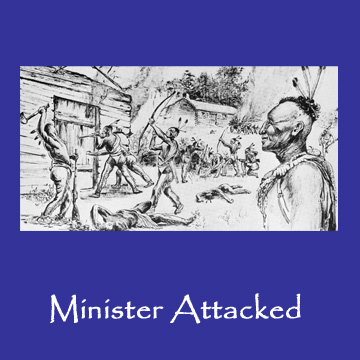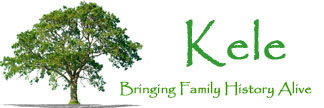Mennonite Persecution and Emigration
In the 16th c. some groups began to feel that baptism had to be based on belief. They eschewed paid ministers and prepared sermons and participation in government. They were non-violence pacifists who objected to the swearing of oaths. They would not swear allegiance to the state or bear arms to defend their country’s interests. These Anabaptist groups were persecuted across Europe by state churches and governments. Their afflictions included beatings, jailing, loss of property, confiscation of children, and sometimes even death.
The Swiss Mennonites of Lake Zurich in the Canton of Berne were exiled and moved to outlaying smaller towns. In 1650 these capable farmers were invited to the Palatine area in Germany to restore the war-torn, once rich farm land. They paid a fine to live there. Then around 1700 a new ruler ended toleration.
Those who remained in Switzerland were banished in 1710. The Berne Mennonites were allowed to sell their property, if they agreed to take the money and leave forever. William Penn, the English Quaker who founded Pennsylvania, felt a kinship with the Mennonites and welcomed them to settle.
So the Swiss Mennonites left the Palatine and Switzerland. Between 1711 and 1732 thousands of Swiss Mennonites immigrated to Pennsylvania, settling in Germantown outside of Philadelphia and in Berks and Lancaster Counties. Others had left the Palatine for Holland and England, and some became indentured servants to pay for their way to New York State and the Mohawk Valley By 1730 so many Germans had come to Pennsylvania the British colonists worried about “The German Peril.” From Lancaster some immigrants followed the ‘river road’ of the Susquehanna River into the Shenandoah Valley.
John Rhodes Immigration
In 1711 the Mennonites in Sumiswald, Canton of Berne, Switzerland were exiled. John Rhodes (in German Hans Derik Roodt/Roth) and his parents Ulrich (born 1680) and Susanna immigrated to America. They arrived in Philadelphia, PA on August 19, 1728. They settled in Lancaster, PA.
Pennsylvania was becoming rapidly settled. New lands beckoned. In 1730 John Rhodes and other Swiss Mennonites arrived in the Shenandoah Valley as the first European settlers. Among them were the Strickler, Kauffman, and soon after the Gochenour families.
In 1741 John Rhodes purchased 100 acres along the Shenandoah River adjacent to Martin Kauffman’s tract. On November 4, 1760 he purchased land from Thomas Palmer of New York, who was granted the Virginia land from Lord Fairfax in 1751. Rev. Rhodes’s estate grew to over 400 acres along the Shenandoah River, with his home situated at the mouth of Tom’s Brook. The area today is three miles northeast of Mauertown, VA not far from Luray. The Rhodes home was in the shadow of Kennedy’s Peak, the highest point in the Massanutten mountains.
The Rev. Rhoads married Eva Catherina Albright in 1740. They had thirteen children. On the fatal day, his eldest son Joseph and two daughters were already in their own homes. The younger children were still at home.
The Massacre at Tom’s Brook
They were called Indian Raids. Between 5 and 6 p.m. in August 11, 1764, Simon Girty, “The White Savage” who had committed a string of attacks, led a party of eight Native Americans into the valley and to the Rhodes home. Their intent was robbery. The method was murder.
Rev. Rhodes shot in the doorway of his home. Eva and a son were killed in the yard of the house. The party followed two boys into a cornfield along the river. One boy climbed a pear tree 150 yards from the house, perhaps to hide, perhaps to see what was happening. The marauders found him in the tree and shot him. The other boy flew to the river, hoping to cross to safety. He was killed in Tom’s Brook; afterward the area was called Bloody Ford.
The marauders searched the Rhodes home but did not find the money that was hidden in a niche in the cellar wall. They burned the house down with Rev. Rhodes body in it. The money, along with important papers, was found safe afterward.
Twelve year old Elizabeth had grabbed 15 month old Esther and run into the barn. While a man tried to break into the barn, she went through an opening in the back of the barn and ran through a field of hemp, crossing the river to find refuge in a neighbor’s house about four miles away. From there she walked another eight miles to Ida, her baby sister in arms, to the home of her eldest brother Joseph. She told him of the horror that had descended upon their parents and siblings.
Two boys and one or two girls were captured and taken into the Massanutten Mountains. The party was in a hurry to get away. The frightened children could not keep up the pace. First they killed the seven-year-old boy who had been ailing. The girls refused to go on and were murdered and left with their brother. Michael alone survived. He was taken to Ohio and spent three years with the Native Americans before a treaty brought his released. He then returned home.
Some sources say the family was scalped and the scalps sold to the French for $15 each. The next day the neighbors came and buried the Rhodes family near the river. Their headstones are now in the Brubaker family cemetery.
Rev. Rhodes father Ulrich died on August 31, 1764.
The Children
Joseph Rhodes was born in 1735 and died in 1766 at Massanutten, August Co., VA. He had a farm in Ida at the time of the massacre. By law he inherited his father’s estate. Joseph married Elizabeth Mary Strickler, who was the daughter of Shenandoah Valley pioneer Rev. Abraham Stickler. Abraham immigrated from Zurich, Switzerland around 1705 and came to Chester Co, PA before migrating to the Shenandoah Valley in 1726 with his sons. He was a master weaver and a Mennonite preacher.
Anna was born around 1738 and died on May 6, 1774 in Ohio. In 1758 she married Christian Grove. In 1765 Christian was deeded 116 acres on the North Branch of the Shenandoah by Joseph Rhodes. Christian was born in 1738 in Lancaster, PA and fought in the Revolutionary War. After Anna’s death Christian married Ester Musselman, of another early settler family. He died at Woodstock, VA in 1786. The Groves great-grandfather had left Zurich, Switzerland for Lancaster, PA.
Susannah (Susan) Elizabeth was born in 1740. She married Mark (Marcus) Grove, brother to Christian Grove who married her sister Anna. Joseph Rhodes gave Mark 120 acres on the north for of the Shenandoah River at the mouth of Elk Lick Run. After Susan’s death Mark married Mary. He died in 1800.
Daniel born 1746 and died in the massacre on August 11, 1764.
David who was born in 1745 and died at age 19 in the massacre on Aug 11 1764.
A son born 1757 and died in the Massanutten mountains on August 11, 1764.
A daughter, perhaps Mary, born in 1754 and died on August 11, 1764.
A son born 1760 and died on August 11, 1764. Likely he was the son with Eva and killed in the house yard with her.
Michael was born May 1, 1749, He was captured and taken to Ohio for three years. On March 26, 1780 he married Anna Strickler, daughter to Benjamin. Benjamin was brother to Elizabeth Strickler who married Michael’s brother Joseph.
Esther was born in 1762. She was rescued by her sister Elizabeth. In 1786 she married Dr. Jacob Kauffman. Esther died in 1836. Jacob’s father the Rev. Martin Kauffman was one of the earliest settlers in the area. Kauffmans appear in the earliest annals of the Mennonite church.
Elizabeth born July 31 1745 and died August 26, 1818. She married Jacob Gochenour.



